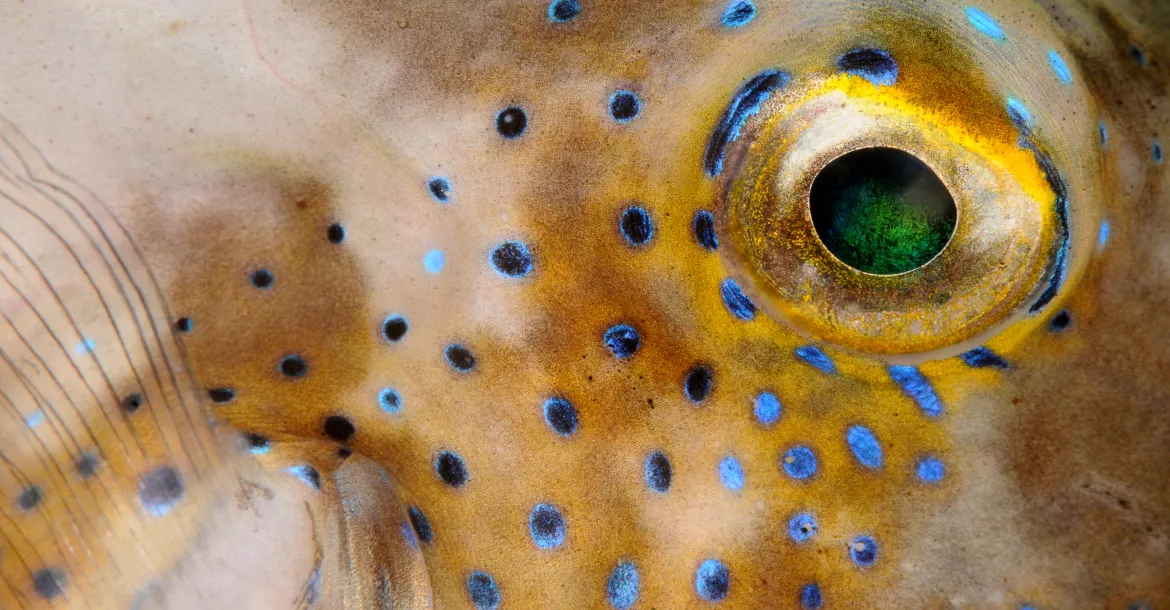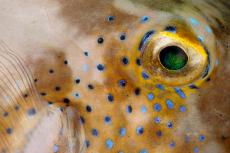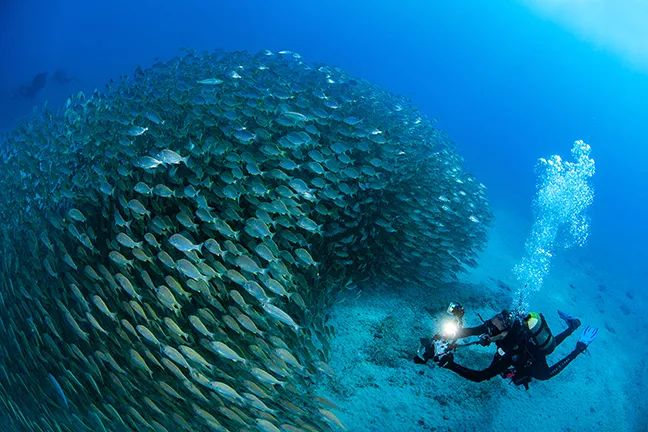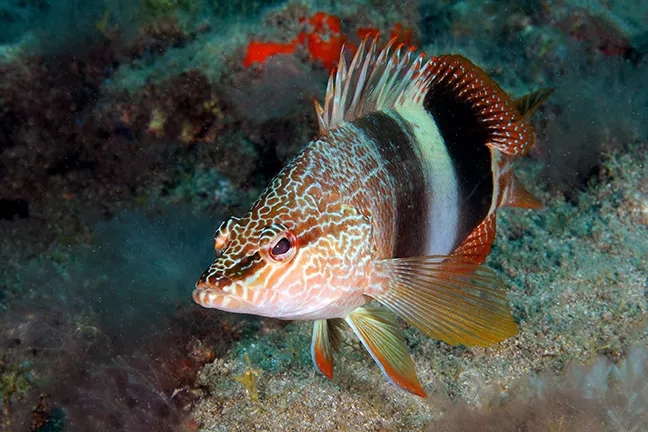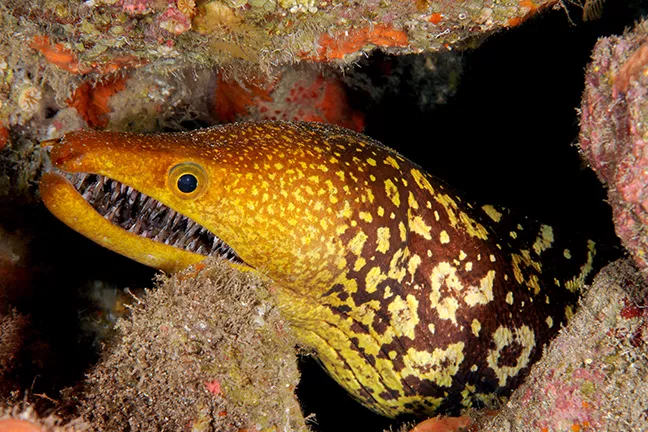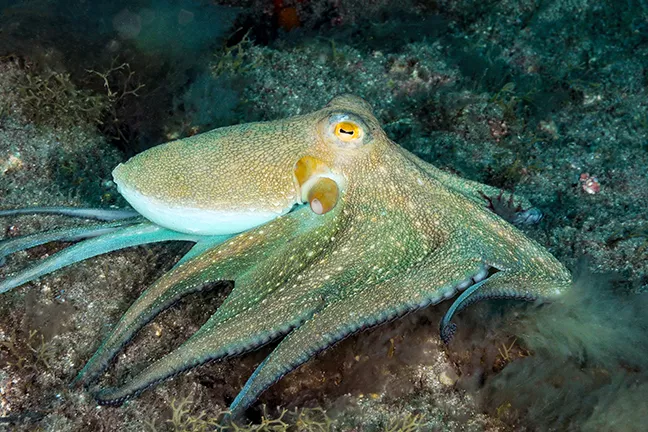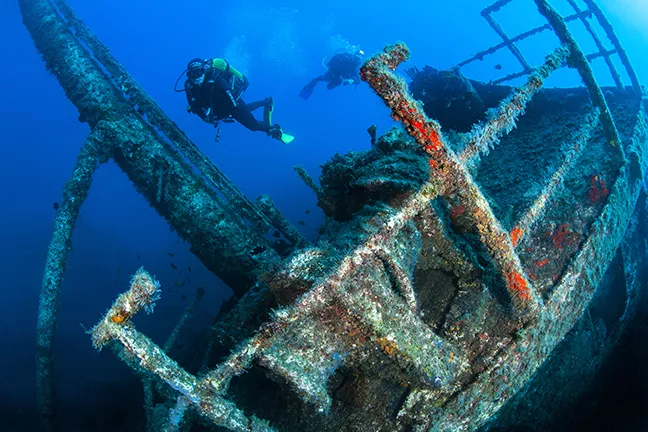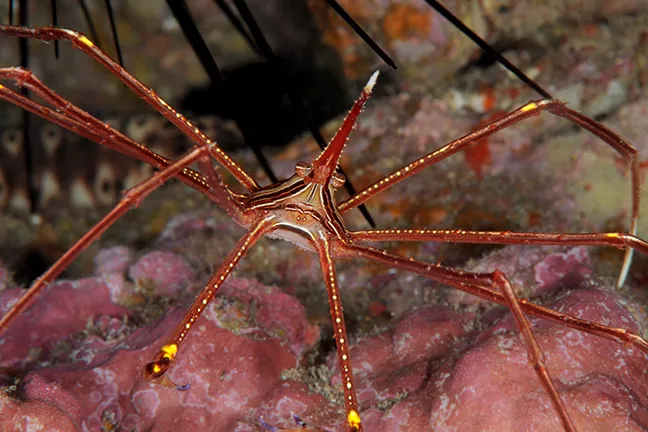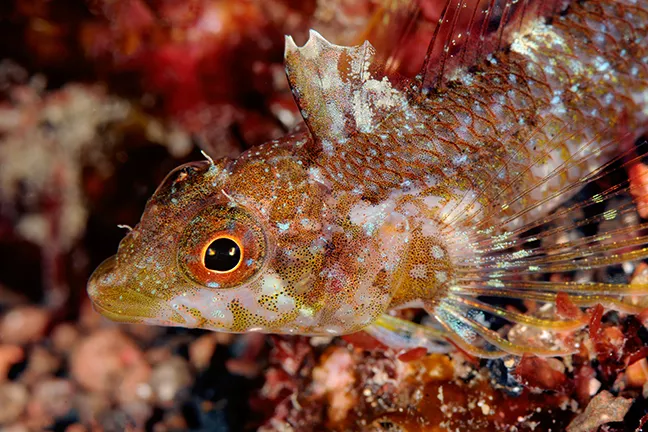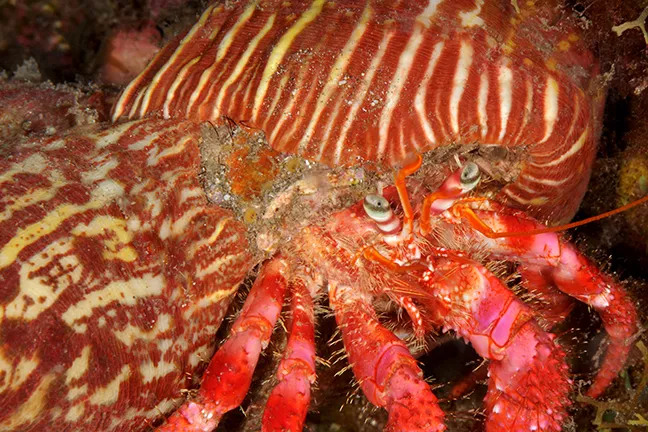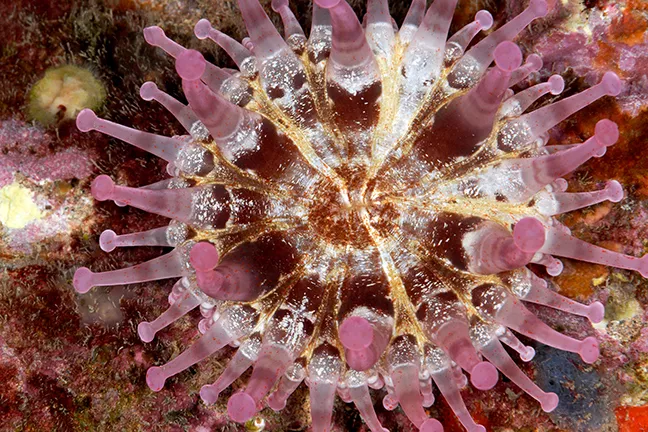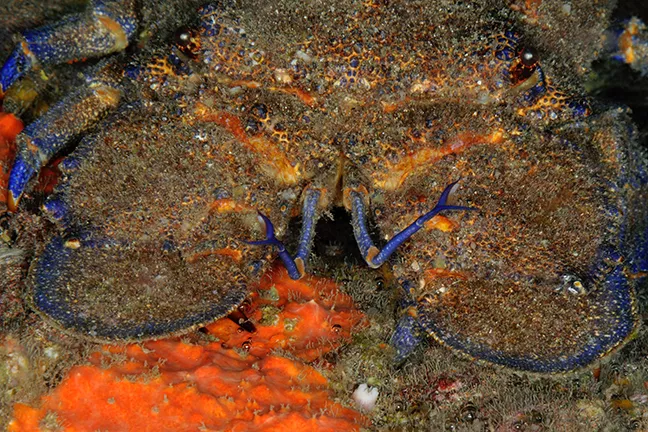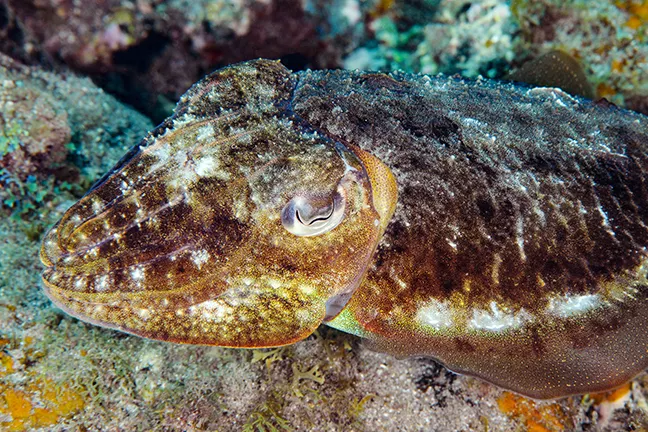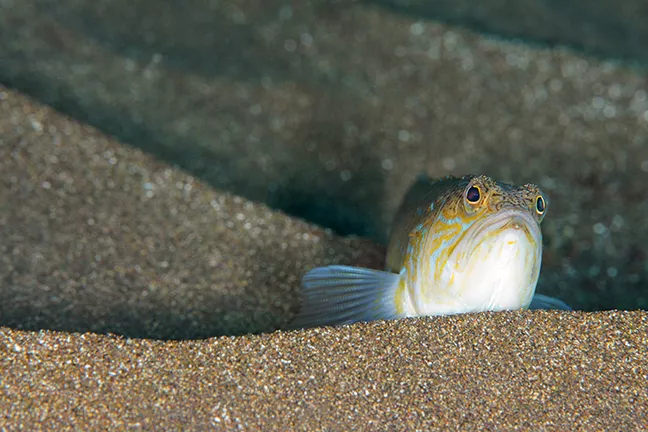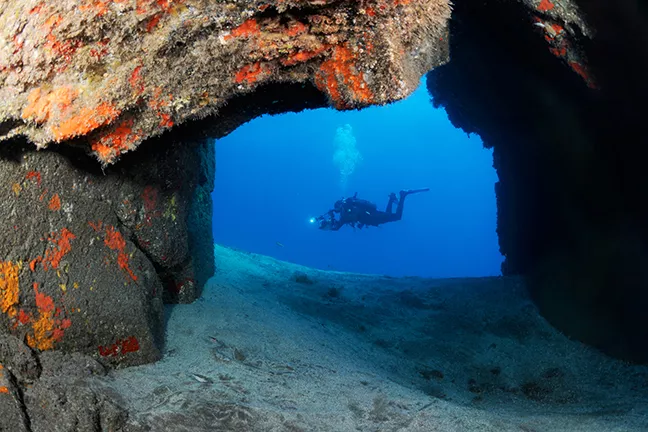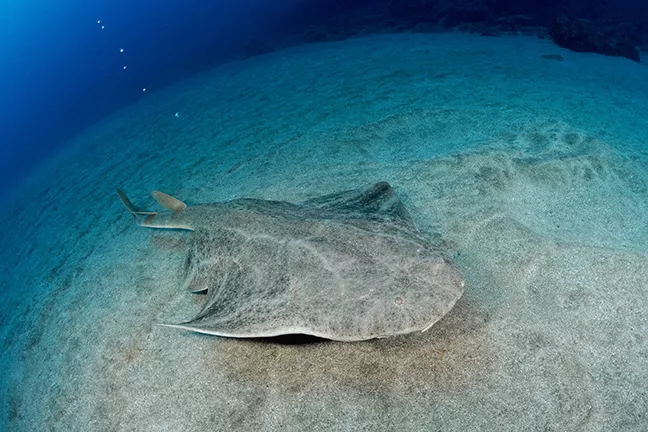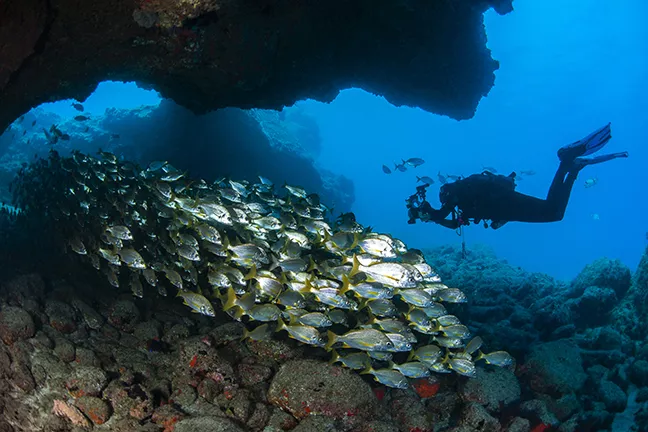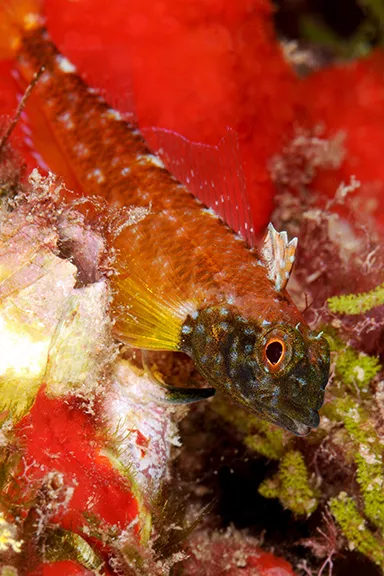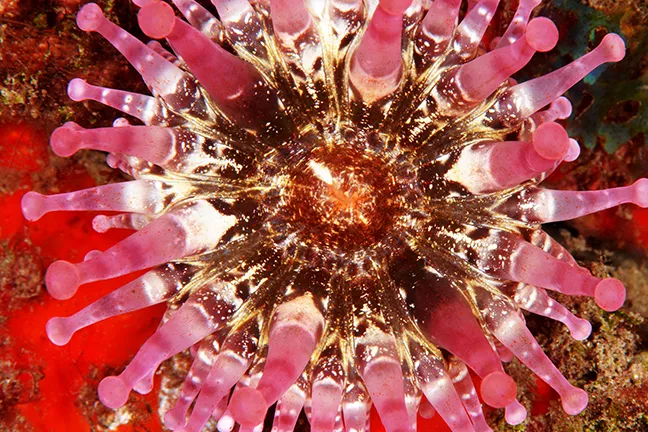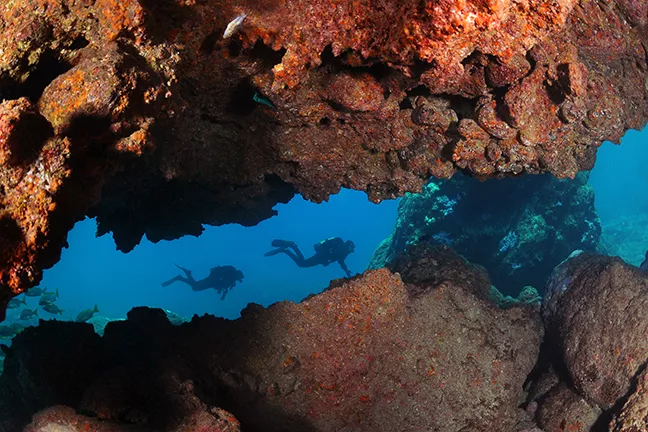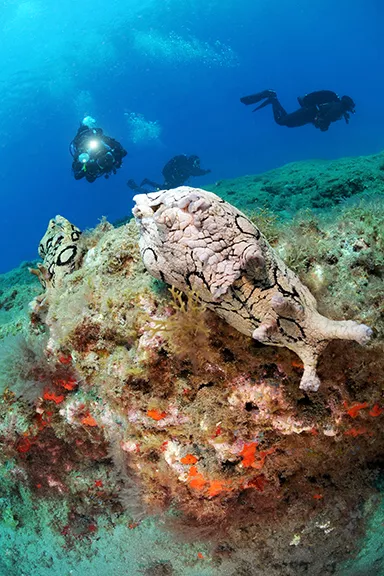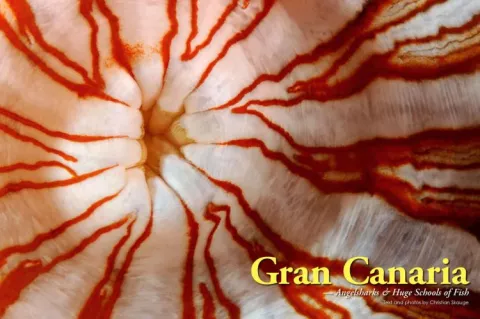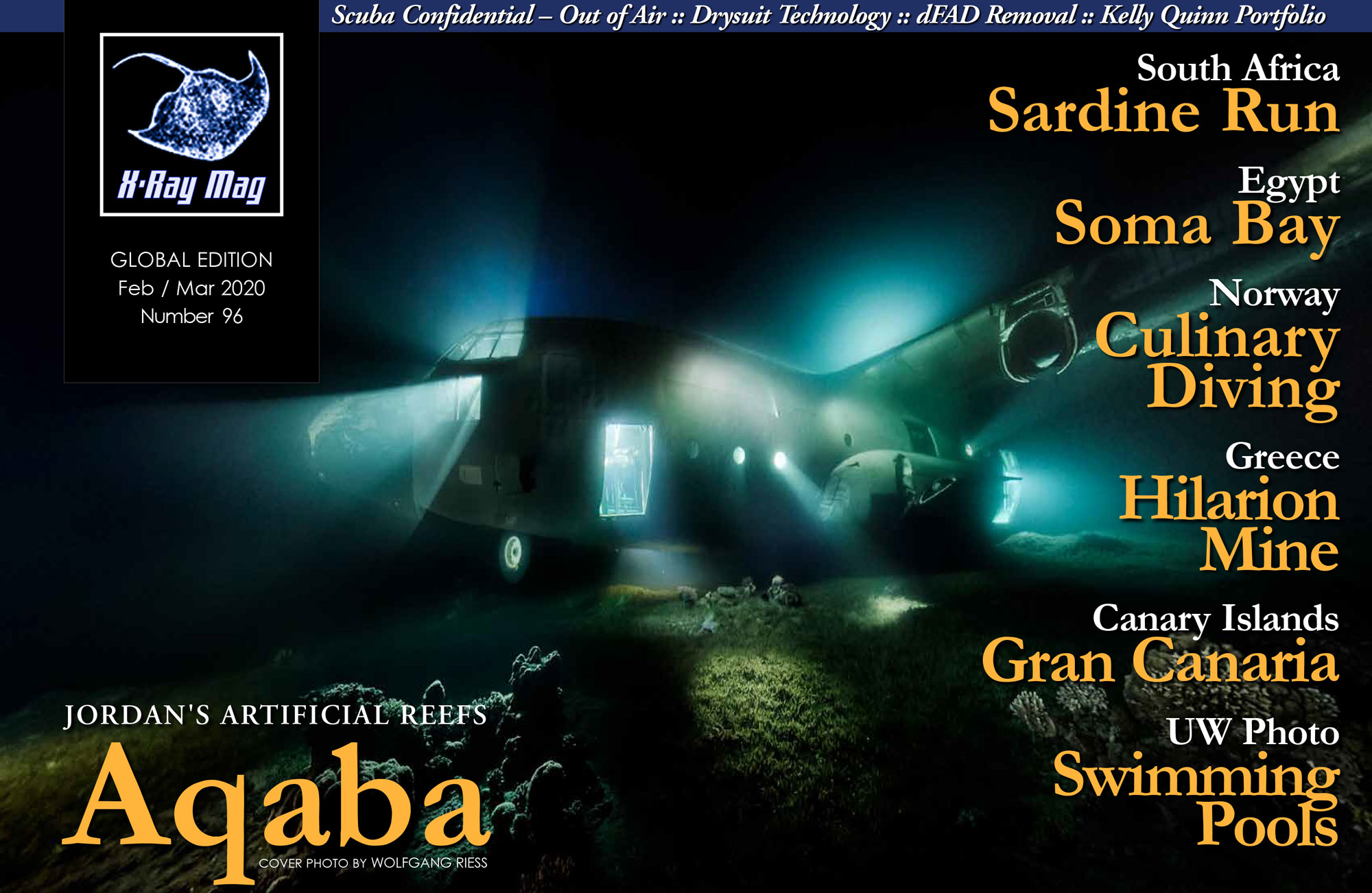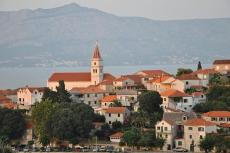Gran Canaria is one of the most visited destinations in Europe, but far too many leave their dive gear at home! You should definitely bring it, because the island offers great diving with huge schools of fish, angelsharks, stingrays and great volcanic seascapes.
Contributed by
Factfile
TRAVEL
We flew Norwegian from Oslo via Copenhagen to Las Palmas, which can be reached from most major European airports.
ACCOMMODATION
We stayed at Apartamentos Las Camelias, close to Playa del Inglés. The spacious studios meet high standards of accommodation, with large bathrooms, kitchenettes and balconies. A supermarket, shops and restaurants are close by. The dive center will pick you up in the morning and take you back after diving.
DIVING
We went diving with Diving Center Nautico in Maspalomas, which was well organized, professional and made sure we had a great time. We did mostly shore dives, but also some boat dives. Good visibility, spectacular lava formations, huge schools of fish, great wrecks and surprisingly diverse and interesting macro life can be enjoyed. The diving is easy, with little or no current, but it may be challenging to get in and out of the water if there are rough seas. The dive center’s team will assist you and make sure you are safe.
SEASON
All year-round, the water temperature is 18-24°C. We had 20 to 30m visibility and 23°C in the water in late September, for which a 5mm suit was adequate; however, a 7mm suit should be considered for the rest of the year. Bring a hood for night dives and do not forget rugged booties for the land dives.
CURRENCY
Euros and credit cards can be used everywhere.
LODGING & TRANSFERS
Diving Center Nautico can book accommodations on your behalf. They will also pick you up at the airport or book you a rental car.
MEDICAL STATEMENTS
A recent medical statement saying you are fit for diving is required, but this can easily be obtained on the island. ■
- - -
Christian Skauge is an award-winning underwater photographer based in Oslo, Norway, and is the owner and editor of the Norwegian dive magazine, Dykking. He is particularly interested in photographing macro life, but also enjoys wide-angle wreck photography.
For more information, please visit: Scubapixel.com.
SOURCES: Divingcenter-nautico.com, Grancanaria.com, Wikipedia.org
Most divers, and especially underwater photographers, seem to think it is necessary to fly halfway around the globe to get a good dive or some great underwater images. Not so! Great diving is much closer to home, at least if you are based in Europe, or plan a stop-over in Madrid. The Canary Islands is a well-known holiday destination, but it seems most people are unaware of the great diving opportunities. Gran Canaria is located bang in the middle of the offshore island group, and offers perhaps the best combination of accessibility, value for money and great diving.
Gran Canaria receives approximately four million tourists every year, but only a fraction of them choose to dive. That’s a pity, because Gran Canaria is surprisingly beautiful underwater, offering great visibility and an impressive range of marine life. I chose to go diving with Diving Center Nautico, the oldest operation on the island, which was established in 1972. Not only are they experienced, they are also very friendly and helpful and will make sure your dive holiday lives up to expectations.
El Cabrón—the bastard
One of the top spots on Gran Canaria is found near the town of Arinaga in the marine reserve called El Cabrón, named after the pirate Pedro Hernández Cabrón who landed here with three ships in 1483. According to legend, he was not a very nice guy, but apparently, he got what he had coming. In the battle that followed the landing, he lost all his teeth and could not eat or speak for days.
The entry at El Cabrón is rocky, and the dive staff will help you get in and out of the water safely. After a short swim, you reach the drop-off, which offers spectacular walls and numerous swim-throughs—some of them so large, they made me think of Gozo’s Azure Window. The sandy bottom at 20m depth below the volcanic formations is home to angelsharks, stingrays, butterfly rays, electric torpedo rays, stargazers, and schools of roncadores (or bastard grunts—but one should always try to learn some local lingo).
Bright red starfish and club-tipped anemones adorn the rocky outcrops and crevices. With the anemones, you also find different species of cleaner shrimp tending to the moray eels living on the reef, and mysterious caves promise stingrays, bigeyes and huge feather duster worms.
The shallow reef, which runs along the rocky coastline, is covered in algae and yellow-green sponges, and is teeming with colorful wrasse, damselfish and parrotfish. If you look closely, you might find an octopus garden, with its curious but timid inhabitants showing off their amazing camouflage and shape-shifting abilities. Sometimes they venture out to feed, but mostly they are busy arranging and re-arranging their personal collections of rocks and seashells to keep their hide-outs safe, neat and tidy. El Cabrón offers seven to eight different dives from the same starting point—no wonder this is a popular dive spot!
Angel in the sand
Visibility was generally good, and the spectacular seascapes of El Cabrón were amazing. The best dive was when our group of divers decided not to return to the usual starting point, but instead continued on around Punta de la Monja and into the bay of Playa del Cabrón. This offered even more spectacular volcanic formations, some of which were shrouded with schools of fish, and had caves occupied by huge pufferfish and bigeyes.
Suddenly, the dive guide started pointing towards the bottom. She had spotted an angelshark! These magnificent animals can grow up to nearly two meters in length and look like a cross between a shark and a ray. How cool! This particular specimen was not buried in the sand, as angelsharks usually are, and had either been for a swim or had been spooked by divers earlier in the day. When they are not camouflaged, angelsharks tend to be skittish, so we gently inched closer to get a better look. As soon as I fired the strobes, it took off and swam out on the sandy flat. Crikey, what to do?
Since I did not have too many dives left, I quickly decided not to let the opportunity pass me by. I swam as hard as I could after the shark and slowly gained on it, only to have it flick its tail and dart off when I was almost close enough. We continued this dance for four to five minutes, and I burned through my air like never before.
Finally, I was able to get close enough to get a handful of shots, and puffing and panting, I started to look for the reef. It was gone! I had no idea which way to head back until I saw the dive guide who wisely had stayed as an intermediary, so I could find my way back. The rest of the dive was spent in shallow water trying to breathe as little as possible. (It is easy for underwater photographers to get caught up in capturing a shot, but always remember, safety first—for your own sake, and that of your fellow divers, as well as the marine life.)
M/V Arona
A dive holiday is not complete without a proper wreck dive, and Gran Canaria offers several opportunities. We chose the M/V Arona, a 96m-long cargo ship that sank at anchor after a fire in 1976. The wreck lies off the coast of Jinamar, some six nautical miles south of the port of Las Palmas’ Puerto de la Luz.
The Arona is in excellent condition and offers large schools of fish both in the holds and above the hull, including barracudas, grunts and breams. The bow is especially beautiful and makes every underwater photographer try a little harder against the current (if there is any) to get the right angle. The wreck lies on its keel with a 45-degree list to port at a 25 to 40m depth.
To get to the wreck, divers are first driven to Las Palmas, where a 15-minute ride in a RIB awaits you. Usually there are two dives on each trip, with a surface interval at sea. Don’t forget to take Dramamine if you are affected by sea sickness!
Macro heaven in Tufia
The tiny, picturesque village of Tufia seems completely untouched by tourism, so present in other areas of Gran Canaria. The steep hillside is covered in white-washed tiny houses, stacked on top of each other above the small beach and anchorage. We trod down the narrow alleys to get to the water and found the beach to be a very easy entry and exit.
Tufia offers terrific macro dives in shallow water, but if one swims out a bit farther from the shallows, there are also some great swim-throughs and caves at Punta de Silva. Being a macro fanatic, I never got that far. There was just too much to see and photograph along the way, and even a 90-minute dive was not time enough! Most people reach it within 20 minutes without any problem, but it is perhaps easier to do without a camera.
Small overhangs revealed sea cucumbers, slipper lobsters, starfish, and anemone shrimp, and colorful Felimare nudibranchs were crawling amongst the algae and sponges, upon which they feed. This large sea slug is associated with the Canary Islands, Cap Verde and the Azores, but is also found in the Mediterranean and even the Gulf of Mexico.
Tiny triplefins competed for attention with various moray eel species, scorpionfish and beautiful anemone hermit crabs. Towards the end of the dive, with the black sandy beach already in sight, we found two large cuttlefish doing their mating ritual, barely noticing us passing by. A cold Coke and an ice cream in Luis’ tiny dive-and-snack-bar at the beachfront rounded off a perfect day.
Sardina del Norte
After a long drive all the way to the northwestern corner of the island to the small town of Sardina del Norte (curiously, there is no Sardinas el Sur), we were hoping to find butterfly rays and perhaps more angelsharks on our next dive. Although visibility was good, we could not spot any of these oftentimes illusive elasmobranchs on the vast sandy plains. Instead, we concentrated on the prolific fish life on the outside of the mole, which is covered with huge concrete blocks, acting both as wave-breakers and an artificial reef.
While trying to frame divers and a school of fish, I spotted something on a nearby outcrop—two giant sea hares! They had the same color and shape as Peter Pan’s shoes, and I swear they were about a size 45. Nearby, some curious yellowline arrow crabs made their spidery presence felt, almost like they were auditioning for the role of Tinkerbell to make my underwater Disney fantasy come alive.
A Lembeh feeling in Taliarte
In the marine life identification book at the dive center, I had spotted something very interesting—a beautiful yellow-spotted bumblebee shrimp. I wondered would it be possible to find it? I really wanted to see this magnificent little creature, and the solution was to do a night dive.
Taliarte is, by far, the best spot for this on Gran Canaria, so off we went. A staircase with rails had been built for swimmers at the site, making the entry and exit a whole lot easier—there was not much light, so we got in the water and swam the 30 or so meters to the drop-off.
We reached the bottom at 8m depth, and almost immediately, a juvenile cuttlefish, not much bigger than a pea, emerged from the dark volcanic sand. I got the same feeling of excitement I had experienced muck diving in Lembeh Strait in Indonesia. This was similar! The tiny critter posed for a few images before it got spooked, inked, and darted off. I found it about a foot away—I hoped its emergency-escape range would improve with time.
We started exploring the steep wall that runs along the entire shoreline at Taliarte, and within three minutes, we found our first bumblebee shrimp. These critters can be spotted at this dive site during the day, but at night, they are plentiful and very active.
The sandy bottom teemed with soles, razorfish, weavers and hermit crabs out feeding, while the walls were full of sleeping pufferfish and scorpionfish. In tiny caves, we found slipper lobsters and well-camouflaged sponge crabs. The club-tipped anemones were in peak season, with tentacles emerging from every crack in the reef. A variety of cleaner shrimp were bustling about, and we even found tiny squat shrimp (also known as sexy shrimp)—a minute symbiotic shrimp, which has a pantropical distribution.
Fish schools of Pasito Blanco
The offshore reef of Pasito Blanco is another must-do dive when visiting Gran Canaria. We drove to the village of Arguineguin where a 24-foot RIB was waiting for us at the dock, engine idling.
After a short boat ride, we dropped down the anchor line to a marvelous sight—an enormous school of roncadores, just at the end of the reef! For more than half of the dive, we were surrounded by fish, completely encircled to the point where daylight started to disappear because of the density of the school. Curious, they slowly revolved around us, only to split up and slide by us on either side, when we dived into the fish soup.
The elongated, submerged reef offered a multitude of overhangs and small caves, revealing bigeyes and trumpetfish by the hundreds. Several large stingrays were resting under the ledges, sometimes letting us get really close, and sometimes swimming off slowly into the distance.
Three of them ended up chasing each other around a big rock, becoming equally surprised to see me each time they made a lap. It was almost as if I could hear them squeal with terrified delight.
Well-organized diving
The diving was extremely well-organized, and Nautico ran a tight operation. Divers would be picked up at their respective hotels in the morning and brought to the dive center, where the gear was loaded into the dive buses. These would then depart for the dive sites of the day, which had been carefully selected after reviewing wind and wave conditions. About half of the 20+ dive sites on the island were shore dives, the other half required a short boat trip—but you still have to get in the bus to go to the harbor.
Between dives, we were offered sandwiches and water to keep us hydrated, and dive briefings were always extensive and thorough. Diving was done at various places all along the eastern coast of the island, from Mogan in the south to Sardina del Norte in the northwest—the western coast of the island being too inaccessible and prone to wind and huge waves.
Don’t just dive—do more!
Gran Canaria has much more to offer than just diving, and this typical one-week holiday would be best enjoyed as a two-week adventure. The interior of the 65km-wide island has great mountains, with lush pine and eucalyptus forests, and the sand dunes at Playa del Ingles is well worth a visit. Being relatively small, the island is efficiently navigated by rental car, and staying in Maspalomas in the south like I did is no hindrance to reaching all corners of this otherwise circular holiday paradise. ■

